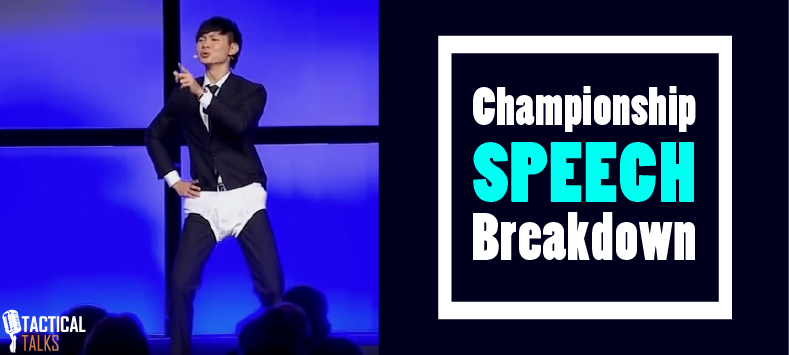I recently came across a breakdown of the 2016 World Champion of Public Speaking’s winning speech. Overall, it was a good, easy to consume article.
However, I wanted to chop it up even more to reveal the power elements that go into a championship-worthy speech. With that, I decided to do my own surgical breakdown that would make a surgeon smile.
If you haven't watched the speech yet, you can watch the video below:
The winner goes by the name of Darren Tay. What a day for Darren Tay!
I actually saw this speech live while in Washington D.C., so I know how it made me feel at the time. Now, armed with video, I’ve had the privilege of being able to dissect it.
Let’s rock.
Darren started of wonderfully by walking out with a smile—this is before he ever says a word.
He did the famous (or infamous) “politician” handshake. First clasping his left hand over the Contest Chair’s hand, and then grabbing the arm, just above the elbow, to make it official.
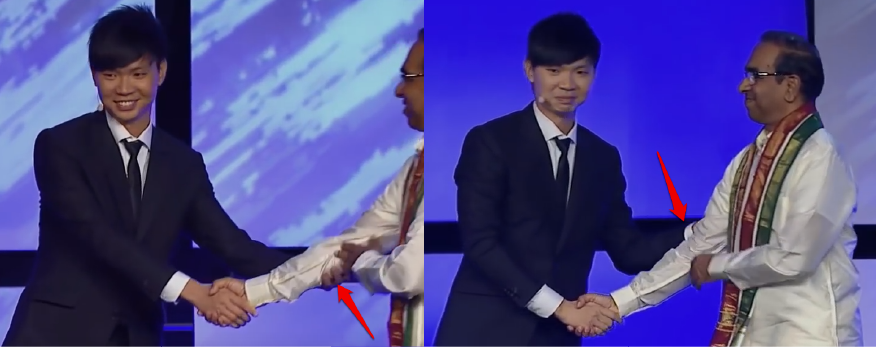
You see that audience? I'm a gentle soul.
Why would Darren do that? After all, the Contest Chair isn’t judging the contestant, right?
It’s persuasion folks. Psychology! It’s to show the audience (which includes the judges) what a warm and loving fellow he is. Not that he isn’t in real life, but in this case it’s for show.
Notice he rests his arms in a relaxed, confident position down at his sides. It’s completely natural. If you have a chance, pay attention to young children (ages 2-4) and how they carry themselves. They let their arms freely hang by their sides.
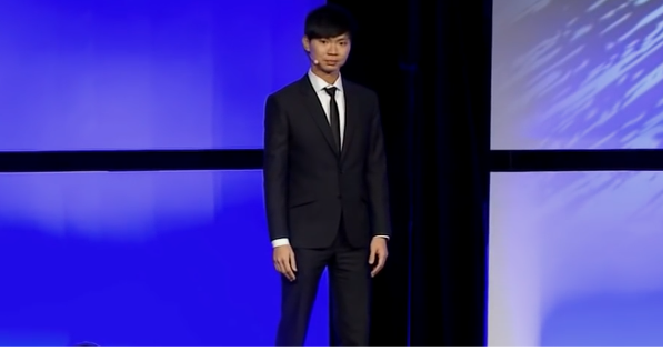
Confident and relaxed with hands at his side.
Once he arrived to his “speaking spot” he paused for 5 seconds.
The first form of communication was non-verbal: he pulled out the undies from his pocket. That’s when the clock likely started.
He almost tripped putting on those undies. He played it off well by not even acknowledging it, that takes discipline. A funny thing is, since it was sort of goofy to begin with, falling down probably would have seemed like it belonged.
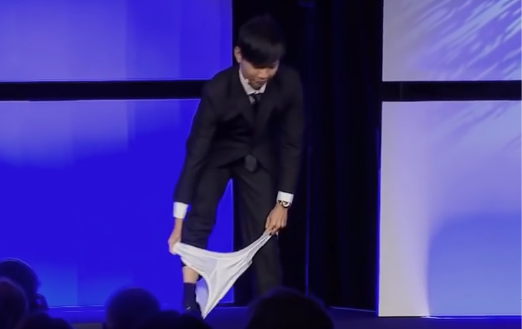
His heel got caught on the undies and it almost caused a tumble. He held firm.
Once they were on, he paused for 5 more seconds.
From the time he got to the “speaking spot,” 20 seconds (00:25 - 00:45) went by before he ever said a word. There is confidence in silence. Remember that.
Based on this, you’d be safe to assume that he implemented pauses extremely well throughout the entire speech—which he did. Well, except for on a couple of questions that he asked the audience. He didn’t pause enough for the audience to actually think about what he had asked.
The pace of the speech did not disappoint, either. As in, he didn’t speak at the same speed the entire time. Fast. Slow. Pause. Go. He mixed it well.
He used a personal story to begin his speech, which ultimately was used to tie the bow around his message when he encountered his bully yet again. Only, this time it was in Toastmasters!
What we just went over is what I quickly skimmed after watching the video for the first time.
Still, when I thought about doing this post, I envisioned much more for you. And that's exactly what I'm going to deliver.
So, in order to really analyze this speech, I didn’t just rely on the video. I watched it several times, of course. After that, I typed out the speech word for lovely word. I then went through it (A LOT) and created a color-coded list of techniques that made his speech effective.
I would have wrote it out in this post but it's a ton of info. I figured it's best served as a resource that you can hang onto. Go ahead and download the PDF by clicking on the big red banner below. No sign-up required. Just a straight PDF download.
Once you've had a chance to watch Darren's speech and my speech breakdown, continue below:
Other Advanced Techniques Darren Used:
Do you have a GURU?
You never want to be the “hero” in your own story. So, you need a GURU to deliver the wake-up call. In this case, Darren had 2.
The first was his aunt who gave him the solution to dealing with bullies: Outsmart and outlast. The second GURU was the bully, later turned bully-counselor, Greg, who gave Darren the solution to dealing with life’s biggest bully...FEAR. To that Greg said, “...stand firm. Face it and acknowledge its presence.”
Remember, don't be the GURU in your speech...
Can the audience relate?
Darren used a variety of elements that the audience could relate to, which helped make the message more meaningful to the audience. For instance, his aunt. Most people can relate to having an aunt, right?
Another example was implementing "Toastmasters" into his speech (multiple times). After all, that is the crowd that he is speaking to, so it wasn’t a bad idea.
Lastly, he used a bully in the speech. Chances are the audience members were either bullied, bullies, or have heard stories about bullies. Very relatable. And that’s what you want to strive for. A simple message delivered in a relatable manner. Mission accomplished.
Alliteration!
Alliteration is a technique that can help words and phrases become memorable. It’s when you use multiple words in a row (or close to it) that begin with the same letter. His title is an excellent example: Outsmart; Outlast
Again he used this technique later on when he said this, “I met a bigger bully. A better bully. A stronger bully.” Now that's a swarm of "B's".
Dialogue
Dialogue was used in various ways. He had dialogue from his characters (the bully and his aunt), he had internal dialogue (what he was thinking to himself), and finally, Darren gave dialogue from the perspective of the audience.
Here’s an example from the speech: "...And at this point in time if you are wondering, “How long is Darren going to have his underwear outside his pants?”
He is speaking directly to what the audience is likely thinking. Darren used the triple crown of dialogue!
"Outside" inspiration?
Darren successfully used a joke that immediately made me think back to a past World Champion of Public Speaking, Jim Key. The funny line was “Who knew?”
Coincidence? Perhaps, but don’t think competitors haven’t analyzed past champs!
Audience involvement
This is another “borrowed” technique that has been used by past champs. At the end Darren allowed the audience to finish his foundational phrase for him. Darren led with "Outsmart" and the audience finished it off with "Outlast."
That’s what I mean by audience involvement. It’s risky because if the audience forgets or doesn’t realize they were supposed to participate, the speaker looks silly. For this winning speech, though, it worked flawlessly.
Crouching
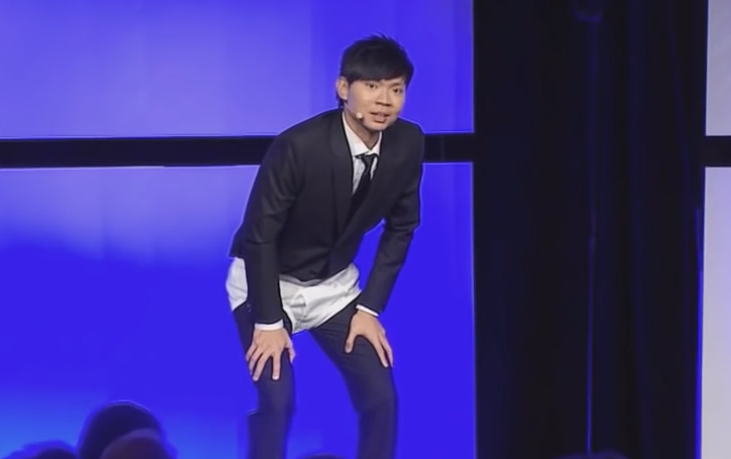
Eerily comfortable...
It’s a powerful stance. It displays confidence and a sense of friendliness at the same time. Almost as if he was leaning in toward the audience to give a dash of intimacy. Well done.
Let's wrap it up...
After watching all 10 speakers in this year’s finals, I pegged Darren as either 1st or 2nd place. It was well rounded. Not perfect nor entirely my taste; however, it was clearly a winning speech. He has the trophy to prove it.
It had all the ingredients of what a championship speech should have. The purpose of this breakdown is to give you checklist of what elements and techniques you can implement into your future speeches.
Bear in mind, though, that this is a public speaking contest. So, if you plan on speaking competitively, have at it. Consume it all, including the bones.
But if you plan on speaking to your clients, colleagues or peers, there’s likely TOO many ingredients listed here for you to implement in a normal speaking situation. I take that back. You could use them ALL, just leave the tighty-whities at home is what I’m getting at.
Anyway…
My friends, can we give Darren another round of applause?
Please share and comment about Darren's speech below!
About this guy...

Howdy! My name is Matt Kramer and I used to suffer excruciating death when speaking in front of a group, now I LOVE it. Overcoming this fear has changed my life and it can change yours, too. My focus is to help you overcome the fear of public speaking so you can build the confidence to go after what you want in life.
